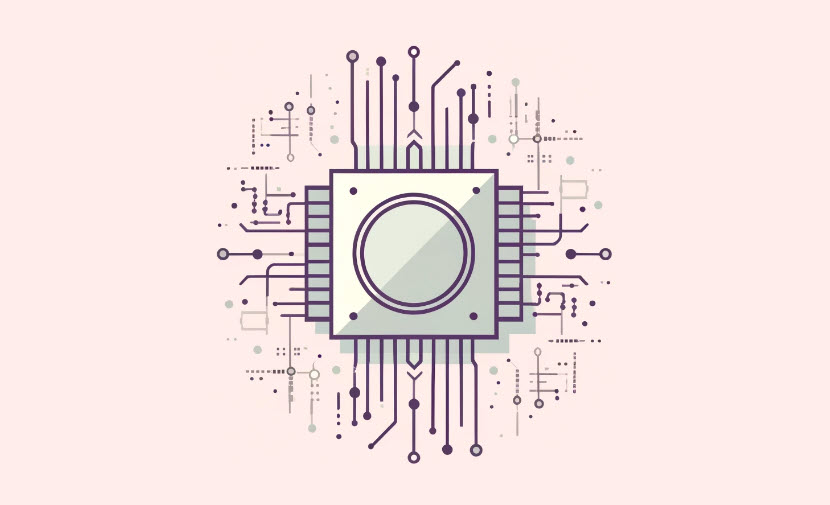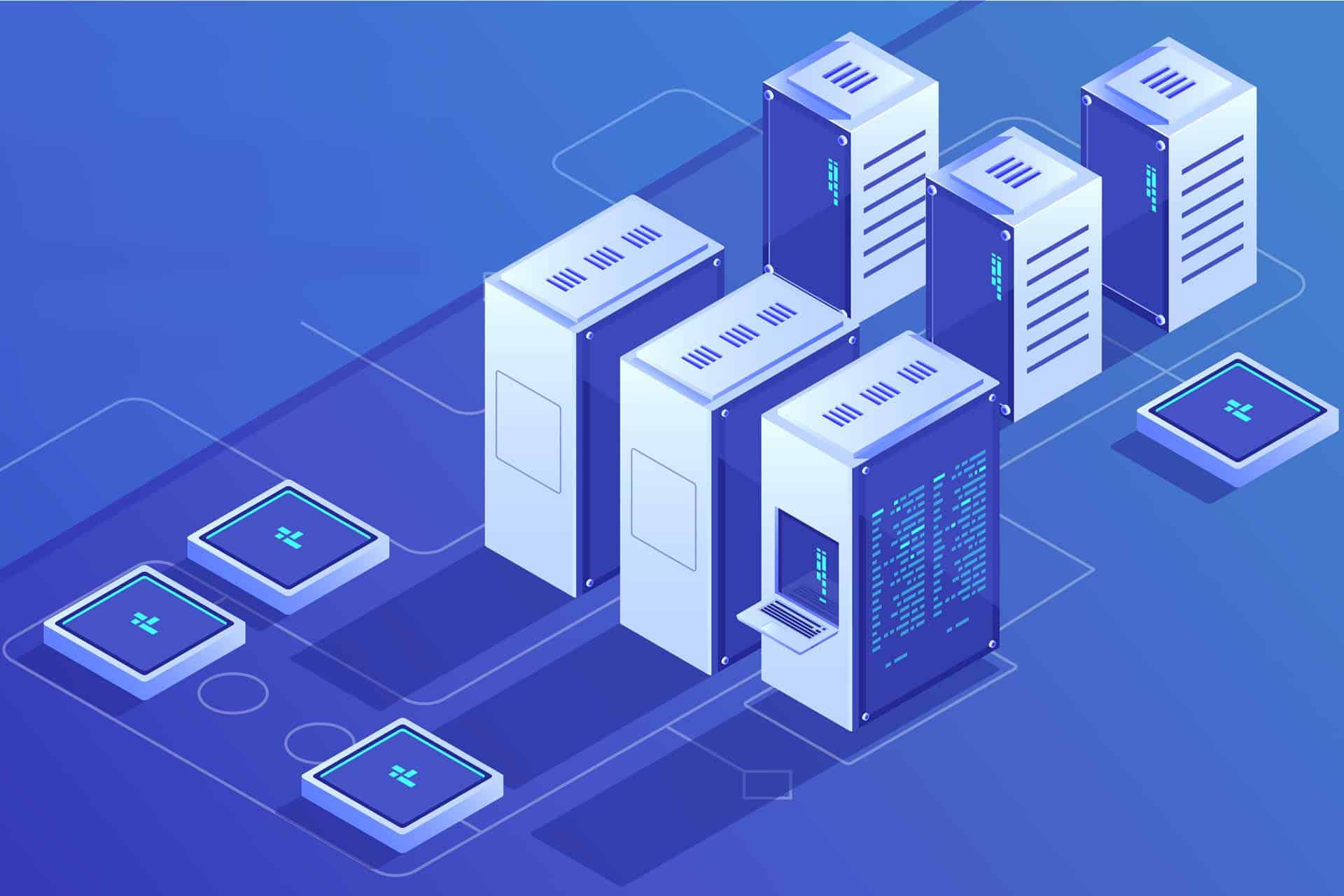Machine learning researchers and data scientists constantly struggle to achieve faster deep learning training times. Traditional CPUs, even powerful ones, struggle with the immense computational burden of these complex models. Graphics Processing Units (GPUs) offer a significant performance boost to address this challenge.
This article provides an in-depth guide to GPU-accelerated deep learning. It will explore the reasons behind GPUs' dominance in deep learning, equipping you with the knowledge to make informed decisions when choosing a GPU for your deep learning projects.

Why Use GPUs for Deep Learning?
Here are the primary reasons why GPUs are preferred for deep learning:
Parallel Processing Capability
GPUs excel in parallel processing, which is crucial for deep learning tasks that involve extensive computations. GPUs consist of thousands of smaller, efficient cores designed for handling multiple tasks simultaneously. This design is ideal for deep learning, where tasks like matrix multiplications and convolutions are performed in parallel. Furthermore, with the ability to execute many threads concurrently, GPUs can handle multiple operations simultaneously, making them significantly faster than CPUs for many deep learning tasks.
High Throughput
GPUs can perform a vast number of calculations per second, often measured in teraflops. This high throughput accelerates the training of deep learning models, which require extensive computation. GPUs also excel in processing large batches of data simultaneously, which is crucial for training models with large datasets.
Optimized for Matrix Operations
Deep learning relies heavily on operations involving large matrices and tensors (multi-dimensional arrays). GPUs are optimized for these operations, providing significant speedups over traditional CPU computations. Many deep learning libraries, such as cuBLAS (CUDA Basic Linear Algebra Subroutines) and cuDNN (CUDA Deep Neural Network library), are specifically designed to leverage GPU capabilities for efficient matrix operations.
Memory Bandwidth
GPUs have high memory bandwidth, enabling them to quickly move large amounts of data between memory and processing units. This capability is critical for deep learning tasks that involve large datasets and models. Additionally, the architecture of GPUs allows for efficient use of shared memory among cores, reducing latency and increasing performance for data-intensive operations.
Energy Efficiency
GPUs offer higher performance per watt, making them more energy-efficient for deep learning workloads. Modern GPUs are designed with advanced cooling and power management systems, ensuring they can operate efficiently even under heavy loads.
Software Ecosystem
There is a robust software ecosystem that supports GPU acceleration, making the development and optimization of deep learning models easier.
Deep learning frameworks like TensorFlow and PyTorch are optimized for GPU acceleration. These frameworks provide built-in support for GPUs, simplifying the development and training of deep learning models. NVIDIA’s CUDA platform offers a comprehensive environment for developing GPU-accelerated applications, including tools, libraries, and APIs specifically designed for deep learning. Additionally, a large community of developers and researchers provides extensive resources and support for GPU-based tools and frameworks.
Scalability
GPUs can easily scale to handle larger models and datasets, enhancing performance through multi-GPU systems. Deep learning tasks can be distributed across multiple GPUs, which is particularly beneficial for training large models or processing massive datasets that a single GPU cannot handle. Furthermore, distributed training techniques, such as data and model parallelism, enable the training process to be spread across multiple GPUs and machines, significantly reducing training time.
Cost-Effectiveness
GPUs are more cost-effective for deep learning workloads than equivalent CPU-based systems due to their hardware efficiency and availability through cloud services. Many cloud providers offer GPU instances that allow users to rent high-performance GPUs on demand, which is often more economical than maintaining local GPU infrastructure.
Real-Time Inference
Inference in deep learning involves using a trained model to make predictions or decisions based on new data, with GPUs enabling low-latency, real-time inference essential for immediate processing applications. GPUs provide the computational power necessary for autonomous driving, real-time video analysis, and interactive AI systems, which rely on real-time inference. Additionally, tools like TensorRT optimize models for inference on GPUs, delivering faster and more efficient performance.
The same qualities that make GPUs exceptional for rendering graphics also make them highly effective for certain non-graphics tasks, such as training neural networks and data mining. Check out our article on GPU computing to discover how GPU-accelerated workloads could enhance your IT projects.

GPU Specs That Affect Deep Learning Processing Speed
Hardware specifications significantly influence the processing speed of deep learning tasks. Here is a detailed breakdown:
GPU Specifications
The specifications of the GPU most directly impact how quickly and efficiently it can train a model.
- Number of cores. The more cores a GPU has, the more parallel computations it can perform simultaneously. The expanded capacity is crucial for deep learning tasks that involve matrix multiplications and convolutions, which benefit from high levels of parallelism.
- Clock speed. The clock speed of a GPU determines how fast each core can execute operations. Higher clock speeds mean that each operation is completed more quickly, improving overall processing speed.
- Memory bandwidth. Memory bandwidth refers to the rate at which data can be read from or written to the GPU's memory. Higher bandwidth reduces bottlenecks, enabling faster data transfer and processing.
- VRAM (Video RAM). The amount of VRAM determines the size of data and the size of models the GPU can handle simultaneously. More VRAM allows for larger batch sizes and more complex models without exceeding memory limits.
- Tensor cores. This specialized hardware is designed to accelerate AI computations, specifically matrix multiplications used in deep learning.
- Power consumption. The amount of power a GPU uses affects its performance and the system’s overall power requirements. High-power consumption GPUs require robust power supplies and efficient cooling.
- Cooling solutions. Maintaining optimal GPU temperatures is essential for preventing thermal throttling and optimal performance. High-end GPUs often come with advanced cooling solutions like liquid cooling systems.
- Software ecosystem. Compatibility with deep learning frameworks and optimized software libraries significantly enhances GPU performance and efficiency.

Minimum GPU Requirements for Deep Learning
Your GPU must meet certain specifications to ensure efficient and effective model training and inference.
Here are the minimum requirements:
- CUDA compatibility. NVIDIA’s CUDA (Compute Unified Device Architecture) is essential for running many deep learning frameworks on a GPU.
- GPU Memory (VRAM). 4GB of VRAM is the absolute minimum for basic deep learning tasks. 6GB to 8GB of VRAM allows for handling larger models and batch sizes, reducing the time spent swapping data in and out of memory.
- GPU compute capability. The compute capability of your GPU determines its ability to support various CUDA features and performance optimizations. A compute capability of 3.5 is the minimum, while 5.0 or higher enables better performance and futureproofing.
- Tensor cores. While not strictly necessary, tensor cores greatly enhance performance for deep learning tasks that use mixed-precision training.
- Power supply and cooling. Check the GPU’s power consumption specifications and make sure your power supply unit (PSU) provides sufficient wattage. The power supply should be at least 450W.
- Efficient cooling. Ensure your system has adequate airflow and consider additional cooling solutions if necessary. Some GPUs come with built-in advanced cooling.
Learn about the differences between CUDA cores and Tensor cores.

Best GPUs for Deep Learning
Here is a comprehensive list of the best GPUs for deep learning.
NVIDIA GeForce RTX 3090
The NVIDIA GeForce RTX 3090 is a high-end GPU designed for demanding workloads. With its 24GB VRAM and 10,496 CUDA cores, it offers excellent performance for training large models and handling extensive datasets.
Pros:
- 24GB GDDR6X VRAM, excellent for large models and datasets.
- High performance with 10,496 CUDA cores.
- Supports tensor cores and ray tracing.
- Great value for performance.
Cons:
- High power consumption (350W).
- Large size may not fit in all cases.
- Expensive for general consumers.
NVIDIA GeForce RTX 3080
The NVIDIA GeForce RTX 3080 offers high performance and efficiency. With 10GB of VRAM and 8,704 CUDA cores, it strikes a balance between cost and performance.
Pros:
- 10GB GDDR6X VRAM, sufficient for most deep learning tasks.
- High performance with 8,704 CUDA cores.
- Supports tensor cores and ray tracing.
- More affordable than the RTX 3090.
Cons:
- Lower VRAM compared to RTX 3090, which limits the use of very large models.
- High power consumption (320W).
NVIDIA GeForce RTX 3070
The NVIDIA GeForce RTX 3070 is an affordable and capable GPU for deep learning, featuring 8GB of VRAM and 5,888 CUDA cores. It is ideal for smaller models and less intensive tasks.
Pros:
- 8GB GDDR6 VRAM, suitable for many deep learning tasks.
- Good performance with 5,888 CUDA cores.
- Supports tensor cores and ray tracing.
- Relatively affordable.
Cons:
- Limited VRAM for very large models or datasets.
- High power consumption (220W).
NVIDIA Tesla V100
The NVIDIA Tesla V100 is a professional-grade GPU designed for large-scale deep learning workloads. With up to 32GB of HBM2 VRAM and 5,120 CUDA cores, it delivers top-tier performance for intensive computations.
Pros:
- 16GB/32GB HBM2 VRAM, excellent for large-scale deep learning.
- High performance with 5,120 CUDA cores.
- Supports tensor cores, optimized for AI workloads.
- High memory bandwidth (900 GB/s).
Cons:
- Extremely high cost.
- Requires specialized cooling solutions.
- Not suitable for gaming or general-purpose use.

NVIDIA A100
The NVIDIA A100 is a GPU tailor-made for AI and high-performance computing. It offers 40GB of HBM2 VRAM and 6,912 CUDA cores, making it a powerful option for extensive deep learning tasks.
Pros:
- 40GB HBM2 VRAM, best-in-class for massive deep learning models.
- Extreme performance with 6,912 CUDA cores.
- Supports tensor cores, optimized for AI and HPC workloads.
- High memory bandwidth (1.6 TB/s).
Cons:
- Extremely high cost.
- Requires specialized cooling solutions.
- Not suitable for gaming or general-purpose use.
NVIDIA Quadro RTX 8000
The NVIDIA Quadro RTX 8000 is a professional GPU designed for enterprise environments. With 48GB of VRAM and 4,608 CUDA cores, it is ideal for handling large models and extensive datasets.
Pros:
- 48GB GDDR6 VRAM, ideal for large models and datasets.
- High performance with 4,608 CUDA cores.
- Supports tensor cores and ray tracing.
- Certified for professional use and enterprise environments.
Cons:
- Very high cost.
- Overkill for smaller models or less intensive tasks.
NVIDIA GeForce RTX 3060
The NVIDIA GeForce RTX 3060 is a budget-friendly option for deep learning enthusiasts. With 12GB of VRAM and 3,584 CUDA cores, it provides a good balance of performance and affordability.
Pros:
- 12GB GDDR6 VRAM, more than the RTX 3070 and 3080.
- Good performance with 3,584 CUDA cores.
- Supports tensor cores and ray tracing.
- Affordable for its specs.
Cons:
- Lower performance compared to higher-end models.
- High power consumption (170W).
AMD Radeon RX 6900 XT
The AMD Radeon RX 6900 XT offers competitive performance for deep learning at a lower price point. With 16GB of VRAM and 5,120 stream processors, it is a viable alternative to NVIDIA GPUs.
Pros:
- 16GB GDDR6 VRAM, sufficient for large models.
- Good performance with 5,120 stream processors.
- Competitive pricing compared to NVIDIA counterparts.
Cons:
- Less optimized software support for deep learning compared to NVIDIA.
- No tensor cores.

NVIDIA GeForce GTX 1660 Super
The NVIDIA GeForce GTX 1660 Super is a budget-friendly GPU suitable for entry-level deep learning. It offers 6GB of VRAM and 1,408 CUDA cores, providing a cost-effective solution for smaller projects.
Pros:
- 6GB GDDR6 VRAM, adequate for entry-level tasks.
- Affordable price point.
- Decent performance with 1,408 CUDA cores.
Cons:
- Limited VRAM and performance for larger models.
- Lacks tensor cores and ray tracing support.
NVIDIA GeForce RTX 2080 Ti
The NVIDIA GeForce RTX 2080 Ti is a high-performance GPU, offering 11GB of VRAM and 4,352 CUDA cores. Despite being an older generation GPU, it remains a strong contender for deep learning tasks.
Pros:
- 11GB GDDR6 VRAM, suitable for large models.
- High performance with 4,352 CUDA cores.
- Supports tensor cores and ray tracing.
Cons:
- High power consumption (260W).
- It remains relatively expensive, despite being an older model.
NVIDIA Tesla P100
The NVIDIA Tesla P100 is a professional GPU designed for high-performance computing and AI workloads. It offers 16GB of HBM2 VRAM and 3,584 CUDA cores, making it suitable for large-scale deep learning projects.
Pros:
- 16GB HBM2 VRAM, excellent for large models.
- High performance with 3,584 CUDA cores.
- Optimized for AI and HPC workloads.
Cons:
- High cost.
- Requires specialized cooling solutions.
- Not suitable for gaming or general-purpose use.
AMD Radeon VII
The AMD Radeon VII is a high-performance GPU with 16GB of HBM2 VRAM and 3,840 stream processors. It offers a good balance of performance and memory capacity for deep learning.
Pros:
- 16GB HBM2 VRAM, suitable for large models.
- Good performance with 3,840 stream processors.
- Competitive pricing.
Cons:
- Less optimized software support for deep learning compared to NVIDIA.
- No tensor cores.
NVIDIA Titan RTX
The NVIDIA Titan RTX is a powerful GPU designed for both AI research and creative applications. It offers 24GB of VRAM and 4,608 CUDA cores, making it ideal for complex deep learning tasks.
Pros:
- 24GB GDDR6 VRAM, excellent for large models and datasets.
- High performance with 4,608 CUDA cores.
- Supports tensor cores and ray tracing.
Cons:
- Very high cost.
- High power consumption (280W).
NVIDIA GeForce GTX 1650
The NVIDIA GeForce GTX 1650 is an entry-level GPU with 4GB of VRAM and 896 CUDA cores. It is suitable for basic deep learning tasks and smaller models.
Pros:
- Affordable price point.
- Low power consumption (75W).
- Decent performance for entry-level tasks.
Cons:
- Limited VRAM and performance for larger models.
- Lacks tensor cores and ray tracing support.

GPUs for Deep Learning: FAQ
Here are the most frequently asked questions about using GPUs for deep learning.
Can Machine Learning Models Be Trained Without a GPU?
Yes, machine learning models can be trained without a GPU, but the process will be significantly slower compared to using a GPU.
CPUs are capable of handling machine learning tasks, especially for smaller datasets and simpler models. However, for large datasets and complex models, training on a CPU can take days or even weeks, whereas a GPU reduces the training time to hours or days. GPUs are specifically designed to handle the parallel processing required for deep learning tasks, making them much more efficient for this purpose.
Which Nvidia Series Is Better for Deep Learning: GTX or RTX?
The RTX series is generally better for deep learning than the GTX series. RTX GPUs come with tensor cores, which are specialized hardware components designed to accelerate machine learning tasks. Tensor cores enable mixed-precision training, which improves computational efficiency and speed.
Additionally, RTX cards support ray tracing, which, while not directly related to deep learning, indicates the advanced architecture of these cards. The GTX series remains suitable for deep learning, but RTX cards offer superior performance and efficiency.
How Much VRAM Is Required for Deep Learning?
The amount of VRAM required for deep learning depends on the complexity of the models and the size of the datasets. As a general guideline:
- Basic tasks. 4GB VRAM is enough for small models and datasets.
- Moderate tasks. 6GB to 8GB VRAM is recommended for medium-sized models and datasets.
- Advanced tasks. 10GB to 24GB VRAM is ideal for large models and extensive datasets.
- Professional and enterprise tasks. 32GB VRAM or more may be necessary for very large-scale models and datasets.
Having more VRAM allows for larger batch sizes and reduces the need for frequent data swapping between the GPU and system memory, which improves training efficiency.
How Many GPUs Are Required for Deep Learning?
The number of GPUs required for deep learning depends on the scale of the tasks and the desired speed of training.
Here are some general guidelines:
- Single GPU. This type of setup is suitable for most small—to medium-sized projects. A high-end single GPU like the RTX 3090 or RTX 3080 can handle substantial workloads.
- Multi-GPU setup. A multi-GPU setup is required for large-scale projects, extensive datasets, or when faster training times are vital. These setups can distribute the workload across multiple GPUs, significantly speeding up the training process.
- Distributed training. A distributed training setup involving multiple GPUs across several machines may be necessary for huge models or datasets. Research and enterprise environments often use this setup to handle the most demanding deep learning tasks.

Maximizing Deep Learning Potential with GPU Technology
GPUs are the backbone of deep learning because their parallel processing architecture efficiently handles massive datasets and complex algorithms through designs optimized for matrix operations. Their high memory bandwidth enables rapid data access, resulting in faster training and improved model performance. Additionally, GPUs offer versatility, with options ranging from affordable models like the NVIDIA GeForce GTX 1650 for smaller projects to high-end solutions like the NVIDIA A100 for large-scale enterprise applications.



